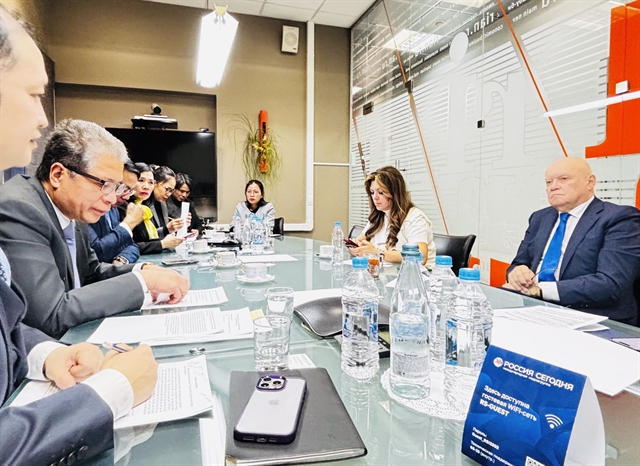 Opinion
Opinion

Nguyễn Ngọc Đông, Deputy Minister of Transport, speaks to Việt Nam News Agency on how to solve transportation problems.
 |
Nguyễn Ngọc Đông, Deputy Minister of Transport, speaks to Việt Nam News Agency on how to solve transportation problems.
Can you elaborate on the Ministry of Transport (MOT)’s restructuring plan for the transport sector from 2016-2020?
The most important component in our plan is to have good connections between different transport modes. It is then followed by restructuring the current transport market so we can optimise available transport modes, transport infrastructure and warehouses. If all these conditions are in place, I’m pretty sure that we can cut transportation costs, travel times, traffic congestion and transport accidents.
In addition, good connectivity between different transport modes will help cut logistic costs while increasing the efficiency of our investment and cutting maintenance costs. Finally, it will contribute to the sustainability of our national economy.
Generally speaking in the past few years, our transport sector has achieved certain successes, particularly in infrastructure development. As a result, our transportation capacity for both passengers and goods has achieved good results in terms of quality and quantity. Besides achievements, I have to admit that the transport sector faces many challenges, including a shortage of investment funds, uneven infrastructure development and the rapid development of means of transport. As a consequence, traffic congestion has become an acute problem in all of our major cities.
Another weakness in our transport sector is the rapid increase in land transportation compared to other transport modes. This is something for us to focus on in the future.
Last but not least, poor transport infrastructure coupled with high transport fees and poor connectivity between different transport modes has harmed the development of the sector.
Does the MOT have any solutions to make the best use of current transport modes?
I think the first thing we have to do is to review our current transport legal system to make sure it is in conformity with the market economy and international economic integration. In addition, we should focus efforts on developing a good strategy in transport development to create an environment for all transport modes to compete on a level playing field.
In the meantime, we’ll continue to review and adjust our planning strategy to make sure it is line with national economic conditions.
In the next few years, we’ll focus more on the development of the Strategy for Transport Services Development and the Proposal on the Development of the Logistic Services within the Transport sector, particularly the planning of dry ports, sea ports, maritime transport and others.
The MOT will also continue to restructure the transport sector along the line of harmonising different transport means and creating connectivity between transport modes to ensure that they all will be in good shape to offer their best services to clients and passengers.
What about investment for the transport sector from 2016-2020?
A key objective for 2016-2020 is to step by step harmonise the connectivity of all transport modes so we can lower transportation costs.
According to the proposal we need some VNĐ952.73 trillion (US$42 billion), of which VNĐ604.81 trillion ($26.6 billion) comes from the State budget and the remaining sum from the non-state sector.
However, according to the State Budget’s plan, in the period from 2016-2020, the MOT will be allocated just VNĐ209.11 trillion (US$9.2 billion). That sum of money includes the Official Development Assistance (ODA) fund, Government bonds and the State budget.
In other words, with such budget allocation, the money allocated to our sector only meets about 31 per cent of the required budget. This is a big problem for us.
This is a big challenge for the transport sector. The State budget allocated to the sector has become smaller and smaller while the ODA for transport infrastructure has dwindled since Việt Nam became a middle income country.
In such circumstances, Public and Private Partnerships (PPPs) are the only way forward for Việt Nam. However, for various reasons, the PPP mode is not attractive to investors inside or outside the country or international credit organisations.
Last but not least, our current legal system regarding PPPs has not yet been completed. _VNS




